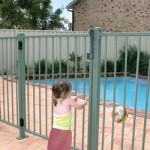Today a post appeared in the online version of Woman’s Day referring to a child almost dying in her sleep and referring to a “delayed drowning”… Firstly we must say that we are glad that Harper Svilicic has made a full recovery, and we are grateful for her mothers efforts to raise awareness….
However, it is sad that the Journalist involved in this piece appears to have done not one single piece of research beyond repeating anecdotes told to Harpers mother.
This is a shame as the story represented a very real opportunity to educate the community about the reality of both drowning and non-fatal drowning and the correct terminology , and the importance of EVERY PERSON WHO EXPERIENCES RESPIRATORY IMPAIRMENT AS A RESULT OF BEING UNDER WATER BEING CHECKED OUT BY MEDICAL PERSONNEL… rather than to just create a sensationalist headline and follow it with a scary story that will put more fear into parents. A simple phone call to a Children’s Hospital Trauma Unit, an organisation like Royal Life Saving Society, or an organisation like us could have resulted in a story with greater substance and educational outcomes.
We have previously written about the importance of getting the right terminology and accurately educating the community about the risks of drowning and non-fatal drowning.
The reality in Australia is that for every fatal child drowning, there are around TEN responses to Non-fatal Drowning (Wallis et al, 2015 6 )with four children admitted to hospital and around one quarter of them experiencing some form of long term injury 8.
From the content of the Woman’s Day article it would be a reasonable assumption that the “Minor dunking that she quickly shook off” resulted in Harper having some coughing and spluttering, and as we will explain below.. this meant that Harper had in fact started the process of drowning.
As this issue is so vital, we are repeating some of the important information below and providing some clarity around what drowning is and what the outcomes of it can be.
Drowning
Until 2002 defining drowning had not been a clear process, in fact there where well over 20 different definitions associated with drowning. including wet drowning, dry drowning, active or passive drowning, secondary drowning or silent drowning.
At the 2002 the World Congress on Drowning a range of experts suggested a new consensus definition for drowning and they required that the new definition should include cases of both fatal and non-fatal drowning. So from 2002 onwards the official definition of drowning has been
Drowning is defined as a process resulting in primary respiratory impairment from submersion in a liquid medium.
None of the terms like dry drowning, wet drowning, secondary drowning are to be used.
If someone has difficulty breathing as a result of being underwater then they have started the process of drowning!
Simple isn’t it….
Well not quite….
So now there is the problem.. this is a nice simple medical explanation of drowning, and the reason that such a nice definition is useful is that it enables other processes, such as coding entries within hospital admission processes and it also allows researchers to draw more meaningful conclusions from pooled data and make it easier to improve injury surveillance and prevention activities.
Defining drowning outcomes
In reaching the consensus definition they also reached a consensus on some definitions around the outcomes of drowning. The outcomes of a drowning ( as described in the World Health Organisations Policy and Practice guidelines) can be rapid or delayed death, morbidity , or life without morbidity. If the person does not die from the drowning, then it is a Non-Fatal Drowning with or without morbidity.
Drowning leading to rapid or delayed death
A rapid death after an immersion is a fairly straight forward concept to understand, but what about delayed death after a drowning? A death within 24hrs of an immersion will be classified as a drowning death.
When they don’t die?
As described above the medical fraternity now includes non-fatal drowning cases in the definition of drowning, but defines them by outcome, either with morbidity of without morbidity.
Understanding morbidity.
Medical dictionaries define morbidity as:
- an illness or abnormal condition or quality
- (in statistics) the rate at which an illness or abnormality occurs, calculated by dividing the number of people who are affected within a group by the entire number of people in that group
- the rate at which an illness occurs in a particular area or population.
So for the purposes of this discussion, clearly it is the first of these definitions that is in operation.
Non-Fatal Drowning with morbidity
Many have investigated and reported on outcome and possible predictors. ,1,2,3 However, no single system is comprehensive and there are pitfalls in the methodologies used.4 There are a number of researchers continuing to look at these issues.
Generally, the intuitive view stands: the shorter the submersion time and the shorter the delay to CPR or medical treatment, the better the outcome.
- Prognosis is ultimately related directly to the duration and magnitude of hypoxia.
- The most significant impact on morbidity and mortality occurs before arrival at hospital.
- Poor survival is associated with the need for continued cardiopulmonary resuscitation efforts in hospital (if this is required around 35-60% die in the emergency department and 60-100% have long-term neurological sequelae).
- Even with hypothermia, intact survival of comatose patients is still quite uncommon.
- In warm water immersion, those who were not doing well at 24 hours have a poor neurological outcome.5
As we consistently remind people, and the reason that this foundation exists, is that according to the Australian Institute of Health and Welfare approximately one quarter of all people admitted to hospital following a drowning will experience what the medical fraternity calls moderate to severe sequalae, which in the case of drownings, are predominantly hypoxic brain injuries.
Non-Fatal Drowning without morbidity
This is an interesting way to say that the casualty fully recovers. We recently posted about a number of successful outcomes and some associated issues, so we will not explore this issue here.
A plain english summary..
So to summarise all of the above….. (with a succinct statement from our friend Dr Justin Sempsrott 7, from Lifeguards Without Borders and Starfish Aquatics Institute)
1. Any person – adult or child – who has been in or under the water and has symptoms of difficulty breathing, excessive cough, foam or froth in the mouth, or aren’t acting right that occur immediately or within a few hours of being in the water had a non-fatal drowning and should seek care from a doctor. Symptoms usually appear immediately, but may be delayed by a few hours or get progressively worse. Onset or worsening of symptoms usually occurs within the first 8 hours of submersion.
2. There is no such thing as “dry” or “wet”, “delayed”, or “secondary” drowning. Anyone with respiratory impairment, not acting right, excessive cough, foam, or lethargy after being underwater, even briefly, should be taken to a hospital for further evaluation. Drowning is a spectrum ranging from mild to moderate to severe. There is no such thing as “near” drowning. A person who does not die from a drowning incident has suffered a non-fatal drowning and survives with either no complications or with brain or other organ damage ranging from mild, to moderate to severe.
4. One of the reasons it is so important that we speak the same language is that we can get a better understanding of the scope of the drowning problem and learn to better prevent and treat it.
5. To better understand the scope of the non-fatal drowning problem we must use correct terminology when speaking to clients, the media, each other, and through social media.
Back to Harpers Story in Woman’s Day
Clearly Harper experienced some respiratory impairment from her “minor dunking that she quickly shook off” meaning that the process of drowning had begun.. over the proceeding hours the symptoms of this respiratory impairment started to show themselves….coughing, gasping, shortness of breath, probably an associated fever and lethargy… Thankfully Harper received medical care and the outcome is good.
There is a very clear message to ALL parents…. if your child is submerged and experiences ANY respiratory impairment as a result of that immersion then IT IS VITAL THAT THEY ARE CHECKED BY MEDICAL PERSONNEL.
There is also a message for Journalists…. PLEASE… do your research and help educate the community about such a vitally important subject like drowning, rather than continue to spread misinformation.
References:
- Zuckerman GB, Gregory PM, Santos-Damiani SM; Predictors of death and neurologic impairment in pediatric submersion injuries. The Pediatric Risk of Mortality Score. Arch Pediatr Adolesc Med. 1998 Feb;152(2):134-40. [abstract]
- Habib DM, Tecklenburg FW, Webb SA, et al; Prediction of childhood drowning and near-drowning morbidity and mortality. Pediatr Emerg Care. 1996 Aug;12(4):255-8. [abstract]
- Oakes DD, Sherck JP, Maloney JR, et al; Prognosis and management of victims of near-drowning. J Trauma. 1982 Jul;22(7):544-9. [abstract]
- Dueker CW; Immersion in fresh water and survival. Chest. 2004 Dec;126(6):2027-8; author reply 2028-9.
- Bratton SL, Jardine DS, Morray JP; Serial neurologic examinations after near drowning and outcome.; Arch Pediatr Adolesc Med.1994 Feb;148(2):167-70. [abstract]
- Wallis BA, Watt K, Franklin RC, Nixon JW, Kimble RM (2015) Drowning Mortality and Morbidity Rates in Children and Adolescents 0-19yrs: A Population-Based Study in Queensland, Australia. PLoS ONE 10(2): e0117948. doi:10.1371/journal. pone.0117948
- Sempsrott, J., Hawkins, S.C. (2015) Use of Terms Near, Dry, Delayed and Secondary Drowing. Position Statement for Starfish Aquatics Insitute, online (Retrieved 15 April 2015)
- Henley G & Kreisfield R 2008. Deaths and hospitalisations due to drowning, Australia 1999-00 to 2003-04. Injury research and statistics series no. 39. Cat. no. INJCAT 109. Canberra: AIHW.





Wonderfully written Michael! So vitally important that this message continues to be truly “heard”.
Very helpful thank you . Another reason why you can’t trust every source on social media . Especially coming from some hack wanna be writer .
Bravo Michael!
This ‘new’ definition has been in place for 13 years now, and I find it distressing that it is still widely unknown amongst the community in general and (more disturbing) aquatic professionals such as swim instructors, lifesavers and lifeguards. This is not terminology to be kept in academia. We all need to speak the same language when it comes to drowning prevention!!
Well done and keep doing the outstanding job that you do!
Very clearly put, Michael.
I don’t care what we call it as long as the message gets out there and everybody is aware of the symptoms . I don’t think the article was sensational I think it was trying to warn people of the dangers and if it saves just one more life then the reporter did some good.
Thanks Debs, the wide array of confusing terminology around drowning is a real issue confronting all drowning prevention advocates. While we ultimately agree that the article was raising awareness and it may well have achieved this, we still think some research and use of the correct terminology is important. Thanks for taking the time to comment.
Maybe it is so confusing to journalists and the general public because the terminology advocated since 2002 is so unclear and complicated. The public needs easier concepts to comprehend – not “mild”, “moderate”, “severe”, “non-fatal drowning”, “non-fatal with or without morbidity”, etc.
Thanks Gerry,
The language is a continual problem. There is a real challenge in finding a happy medium between the language of medicine and research and the language of prevention activities. Having a consensus is also important so that we all know exactly what it is we are talking about.
Appreciate you visiting and commenting.